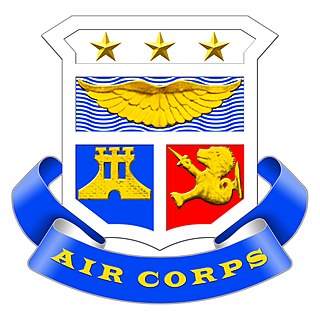
The Philippine Army Air Corps was created in 1935 as the air component of the Philippine Army. It was the predecessor of the Philippine Air Force, created in 1947.
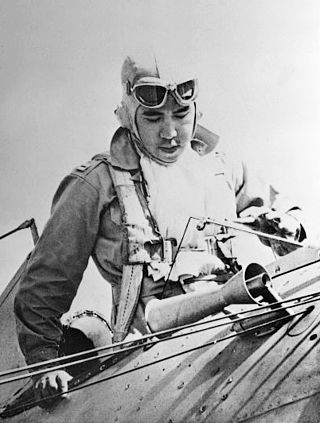
Jesús Antonio Villamor was a Filipino-American pilot, spy, and Medal of Valor awardee who fought the Japanese in World War II.
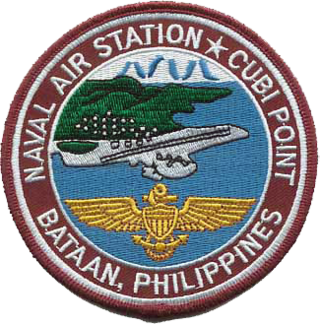
U.S. Naval Air Station Cubi Point was a United States Navy aerial facility located at the edge of Naval Base Subic Bay and abutting the Bataan Peninsula in the Philippines.
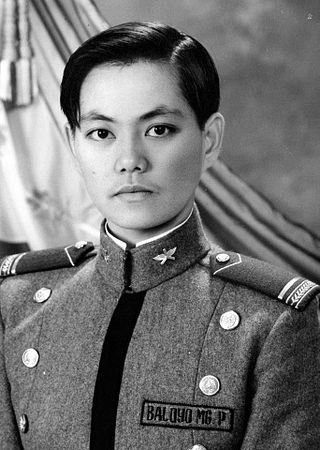
Mary Grace Pango Baloyo was a Filipino flight officer in the Philippine Air Force who posthumously became the first female member of the Armed Forces of the Philippines to receive the Medal of Valor.

Cesar Basa Air Base, or simply Basa Air Base, is an airbase currently operated by the Philippine Air Force. It is located at Floridablanca, Pampanga about 40 miles (64 km) northwest of Metro Manila in the Philippines. It is named after César Basa, one of the pioneer fighter pilots of the Philippine Air Force.

From 1986 to 1987, there were several plots to overthrow Philippine President Corazon Aquino involving various members of the Armed Forces of the Philippines. A significant number of the military participants in these attempts belonged to the Reform the Armed Forces Movement (RAM), while others were identified loyalists of former President Ferdinand Marcos, who had been deposed in the People Power Revolution in late February 1986.
The 1989 Philippine coup attempt was the most serious attempted coup d'état against the government of Philippine President Corazon Aquino and part of a series of coup attempts against her. It was staged beginning December 1, 1989, by members of the Armed Forces of the Philippines belonging to the Reform the Armed Forces Movement (RAM) and soldiers loyal to former President Ferdinand Marcos. Metro Manila was shaken by this Christmas-time coup, which almost seized Malacañang Palace. It was completely defeated by the Philippine government by December 9, 1989.

Cañacao Bay is a small bay located within the larger Manila Bay in Luzon island in the Philippines.
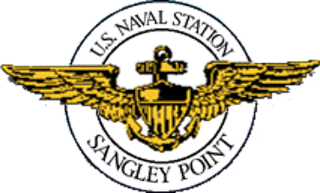
Naval Station Sangley Point was a communication and hospital facility of the United States Navy which occupied the northern portion of the Cavite City peninsula and is surrounded by Manila Bay, approximately eight miles southwest of Manila, the Philippines. The station was a part of the Cavite Navy Yard across the peninsula. The naval station had a runway that was built after World War II, which was used by U.S. Navy Lockheed P-2 Neptune, Lockheed P-3 Orion, and Martin P4M Mercator maritime patrol and anti-submarine warfare aircraft. An adjacent seaplane runway, ramp area and seaplane tender berths also supported Martin P5M Marlin maritime patrol aircraft until that type's retirement from active naval service in the late 1960s. NAS Sangley Point/NAVSTA Sangley Point was also used extensively during the Vietnam War, primarily for U.S. Navy patrol squadrons forward deployed from the United States on six-month rotations. The naval station was turned over to the Philippine government in 1971. It is now operated by the Philippine Air Force and Philippine Navy.

Corazon Aquino became the 11th President of the Philippines following the People Power Revolution or EDSA 1, and spanned a six-year period from February 25, 1986, to June 30, 1992. Aquino's relatively peaceful ascension to the Philippine presidency signaled the end of authoritarian rule of Ferdinand Marcos in the Philippines, and drew her and the Filipino people international acclaim and admiration.

Patrol Squadron 9 (VP-9) is a U.S. Navy patrol squadron with its homeport located at Naval Air Station Whidbey Island. As of 2018, VP-9 is part of Patrol and Reconnaissance Wing Ten, Commander, Naval Air Forces, Pacific.
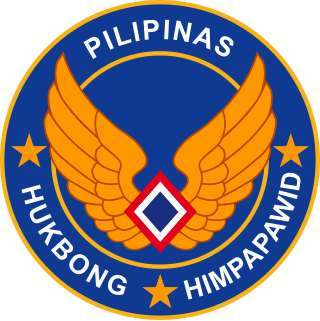
The Philippine Air Force (PAF) is the aerial warfare service branch of the Armed Forces of the Philippines. Initially formed as part of the Philippine Army as the Philippine Army Air Corps (PAAC) in 1935, the PAAC eventually saw combat during World War 2 and was formally separated from the Army in 1947 as a separate service branch of the AFP under Executive Order No. 94. At present, the PAF is responsible for both defending Philippine airspace, and conducting aerial operations throughout the Philippines, such as close air support operations, combat air patrols, aerial reconnaissance missions, airlift operations, helicopter tactical operations, special operations, and aerial humanitarian operations, which includes search and rescue operations. The PAF has also carried out various missions within the country and abroad.

Danilo Atienza Air Base is a military base used by the Philippine Air Force, located on the northern end of the Cavite Peninsula in Manila Bay, Luzon Island, Philippines. It is adjacent to Cavite City, in Cavite Province.

Naval Station Pascual Ledesma, also known as Cavite Naval Base or Cavite Navy Yard, is a military installation of the Philippine Navy in Cavite City. In the 1940s and '50s, it was called Philippine Navy Operating Base. The 9-hectare (22-acre) naval base is located at the easternmost end of Cavite Point in the San Roque district of the city. Via traffic lane, this naval establishment is next to the famous Samonte Park. It was the former extension of U.S. Naval Station Sangley Point which is now Naval Station Heracleo Alano. In 2009, it was named after Cmdre. Pascual Ledesma, a leader of the Philippine Revolution and the first Officer-In-Command of the Philippine Navy.

The 15th Strike Wing is a wing unit of the Philippine Air Force, responsible for overall tactical and ground air support operations in support of Armed Forces of the Philippines units. The unit is headquartered at Danilo Atienza Air Base, Sangley Point, Cavite, just outside the capital Manila. The Wing, as of 2009, was organized with Personal, Coordinating and Technical Staff. Under the Wing's command were units broken up into 3 major groups: Tactical, Maintenance and Supply, and Air Base. The Wing's tactical elements included the 16th, 17th, 18th, and 20th Attack Squadrons, the 19th Composite Tactical Training Squadron, and the 25th Composite Attack Squadron. Many of these units were forward deployed under the operational control of the Philippine Air Force's numerous Tactical Operations Groups. The 460th Maintenance and Supply Group and the 590th Air Base Group filled the other roles.

Sangley Point Airport, also referred to as Cavite Airport, is a domestic airport at Sangley Point, Cavite City in the Philippines primarily serving general aviation and turbo-propped airliners in the general vicinity of South Luzon and the Greater Manila Area.
Jose Protacio Cangco Gozar was a Filipino military aviator and a flight officer of the Philippine Army Air Corps, who was awarded at the outbreak of World War II the Distinguished Service Cross.

Naval Base Manila, Naval Air Base Manila was a major United States Navy base south of the City of Manila, on Luzon Island in the Philippines. Some of the bases dates back to 1898, the end of the Spanish–American War. Starting in 1938 civilian contractors were used to build new facilities in Manila to prepare for World War II. Work stopped on December 23, 1941, when Manila was declared not defendable against the Empire of Japan southward advance, which took over the city on January 2, 1942, after the US declared it an open city. US Navy construction and repair started in March 1945 with the taking of Manila in the costly Battle of Manila ending on March 2, 1945. Naval Base Manila supported the Pacific War and remained a major US Naval Advance Base until its closure in 1971.
















